Mystical and alluring, frustrating and fascinating, warm and friendly, chaotic and yet calm…that is Yangon for you.
In short, Yangon, the biggest city of Myanmar (formerly Burma) has a way of creeping into your heart and making a home right there! Even today, months after my return, I often find myself going over everything I saw and experienced in this city.
I have compiled a list of things to do, see, eat and experience here.
Top Tip: Yangon is great for budget travelers. Many of the top attractions are free. Bus travel is cheap and convenient.
First things first
- Most people arrive at Yangon International Airport, although there are flights to Mandalay from a few destinations around.
- E-visa is available and rather quick and easy to obtain
- Sim cards are available at the airports, internet is surprisingly fast. The country is well connected.
- No shared bike-rides in Yangon (available on the other side of the river though)
- Taxis are in plenty. Bus service is plenty.
- Grab Taxi is Myanmar’s Uber.
- Yangon is safe.
- All kinds of food is available here – Western, Indian, Chinese…you name it, you have it.
- You will be required to cover up to enter the temples. Invest in a lyongi, the local dress.
- Drink tea. In Myanmar, tea drinking is a ceremony.
Please keep in mind that Myanmar has only recently opened its doors to tourists, which means there are a few rough edges to smooth out – but again, that is the charm of this country. It feels real. Raw. You know – original. And that is Myanmar’s USP. Motorists honk mercilessly, might not always stop for you to cross, streets are spattered with betel-juice, you might find broken or uneven pavements – but beyond these minor aberrations this city is welcoming.
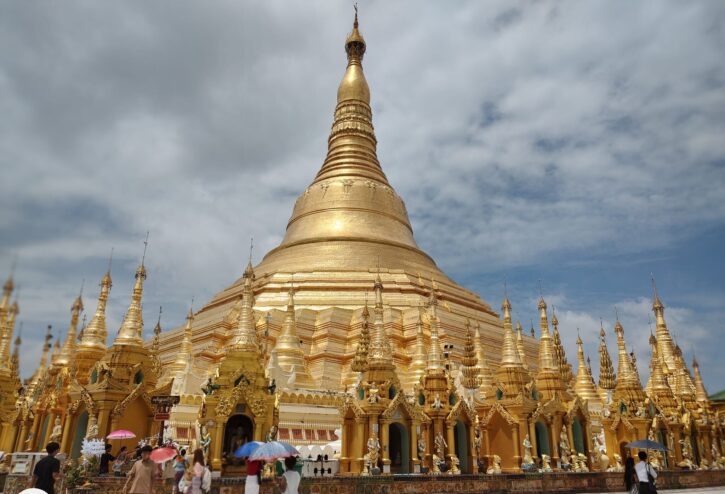
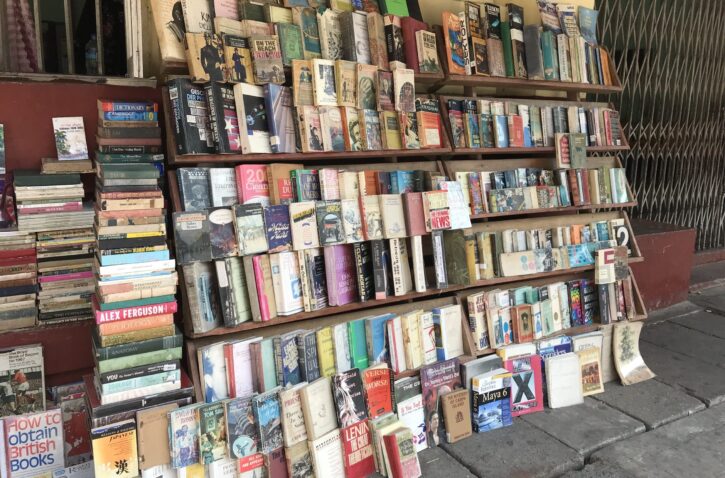
What you should not miss
- A walk through Chinatown and Muslim Quarters
- Sule pagoda
- Drinking tea (and eating it too)
- Shwedagon Pagoda at sunrise and sunset
- Street Art scene
- Ride on the Circular Train
- The Snake Temple
- Eating fresh grills on 19th Street
- The Thanlyin Church
- Bogyoke Aung San Market
- Kandawgyi Park
A walk through Chinatown and Muslim Quarters
There is no better way to explore downtown Yangon than a walk through the Chinatown and Muslim Quarters. A you weave your way through streets and into China Town, you are likely to find hawkers selling everything from tea to trinkets. There is no particular street for you to take but no matter which direction you choose to walk, you are going to enjoy the energy of this place. Remember that the streets (and wet markets) can be very crowded and the roads are not often smooth, so wearing shoes is advised. The Muslim Quarter located near the Great Mosque is bustling with tea shops and small restaurants selling really tasty food. Here you might even find ethnic foods.
Visiting Sule Pagoda
Interesting stat: Yangon has the highest number of colonial era buildings in all of South East Asia. You’ll find hundreds of British-inspired buildings on a small patch of space in downtown. Britain took over most of Burma back in 1852 and erected these towering buildings; some of which are known as ‘British Burmese style’, throughout their occupation. Highlights include the City Hall, the central train station, the high court and the infamous Strand Hotel.
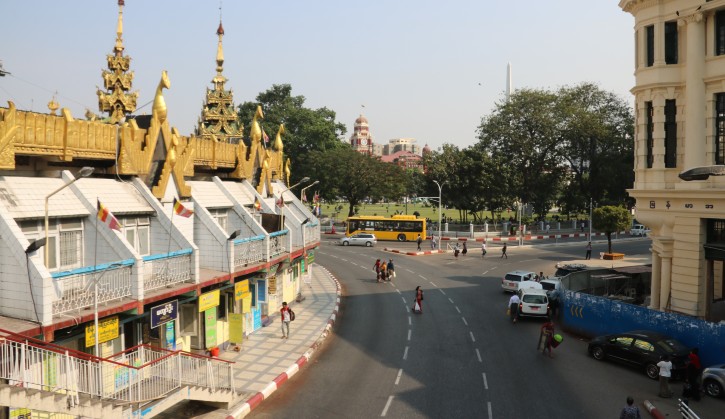
Drinking your tea (and eating it too)
Myanmar specialises in a delicious, milky tea (laphet-yay) and it is easy to find this all over the country (this uses sweetened or condensed milk). It is considered as a national delicacy and a symbol of Burmese hospitality. Clear tea is just leaves steeped in water.
The laphet-thoke, however is eaten as a salad. (laphet is fermented tea leaf and thoke means salad).
Shwedagon Pagoda at sunrise and sunset
A must-do, which will make any good Yangon to-do list, the Shwedagon is the most impressive and influential pagoda within Yangon and perhaps all of Myanmar. Getting there early however doesn’t guarantee anything because the place is alive and swarming with local Buddhists arriving for morning prayers. Evenings are of course the time when most tourists visit – so there is no saying you when you will find the place ’empty’. But the Pagoda (despite the milling crowds) is a sight you will remember forever.
Cost: Entrance fee for foreigners is 10,000 kyat.
Tip: While you are here, pay a visit to the green and gold Wa Ka Street Mosque. This is the resting place of Bahadur Shah Zafar II, India’s last Muslim Emperor.
Yangon’s Street Art
Yangon has a number of street alley gardens where you will find kinds playing sepak trawaw (a volleying foot game). These spaces are generally safe for kids and filled with some great street art and murals. The streets were previously ‘dump yards’ but over the years NGOs worked to restore it to its current state.
Ride the Circular Train
Whether you intend to overland the country on trains or not, the Circular Train is a must do when you are here. Simply out, it is the best way to get up close to the real people. The train departs from the central train station, and does a loop of the outskirts of Yangon. The inside of the train is just as exciting as the outside. Please note that this trip takes up to 4-5 hours.
Check out what it is like to ride the Circular Train
Visit the Snake Temple
This post comes with a warning – if you suffer from ophidiophobia, stop reading right now. Because this experience, as the name suggests, is about snakes. Not the slithery or venomous ones you find in gardens, but of giant- sized, milk-fed, lazy pythons that live inside a temple on a lake.
But first, to arrive here, I had to cross the Yangon River on a ferry (tourists must buy a return ticket for 4000 Kyat) to Dala Village and engage a bike taxi to drive me to Twante, the home of Baung Daw Gyoke Pagoda (nicknamed Hmwe Paya) meaning Snake Temple.
Click here for the full story.
Kandawgyi Park – great place to chill
Yangon is busy. Mostly chaotic but there are a few islands of peace and quiet in this frantic city. The Kandawgyi Park (accessible from the City Centre) also had a lake which is nearly always empty.
The lake is also a fascinating look into why we think Yangon is so unspoilt: there are so many untapped opportunities to rope in tourists – they could offer rowboats, or ferry people out to the impressive structures in the middle – but instead, you’re left to your own devices. Instagrammers will also love the lake since it offers loads of photo opportunities, including a temple-like restaurant complex (Karaweik Hall), the lake itself and vistas of water lilies.
The park is free to enter unless you enter the boardwalk near Karaweik Hall, which is 2, 000 kyat.
Gorging on fresh grills on 19th Street
The great Anthony Bourdain loved Yangon. His favourite place to eat – 19th Street. Head there at dinner time to see why! Barbeque stands line both sides of the road serving up fresh grills (meat, vegetables and oh, mushrooms!). Down the juicy grills with beer and you will fall in love with city all over again.
Cost: 1,500 – 5,000 kyat (0.75 – 2.50 GBP) depending on what you order.
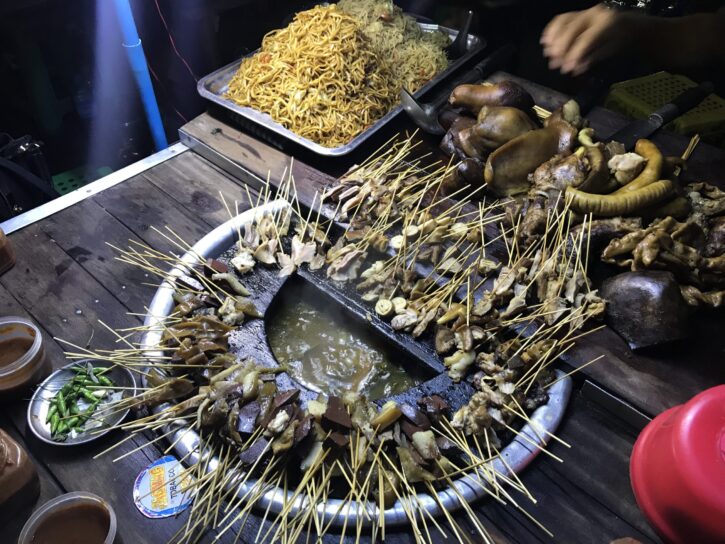
Best time to visit Yangon
So there are three seasons for Yangon, the wet season which occurs across the months of June, July, September and October – where it is hot and wet. The dry season, from November to February – favourite among travellers for its warm days and cool nights.
And then there is the hot season – between March and May, where the humidity rises alongside the temperatures.
Transportation in Yangon
The most recommended public transportation in Yangon is YBT or Yangon Bus Transportation serving routs within the city. most of the routs pass through one or more tourist spots.
Yangon city is very walkable (depending mainly on your physical fitness, of course) and your accommodation. Walking still remains the best and the easiest mode of getting around (considering frequent traffic snarls) but the best alternative is the taxi – you could use the Grab app or hail one off the street. If that doesnt sound like something you like doing, your hotel/hostel/ can order one for you. (This helps in the event of communication gap!)
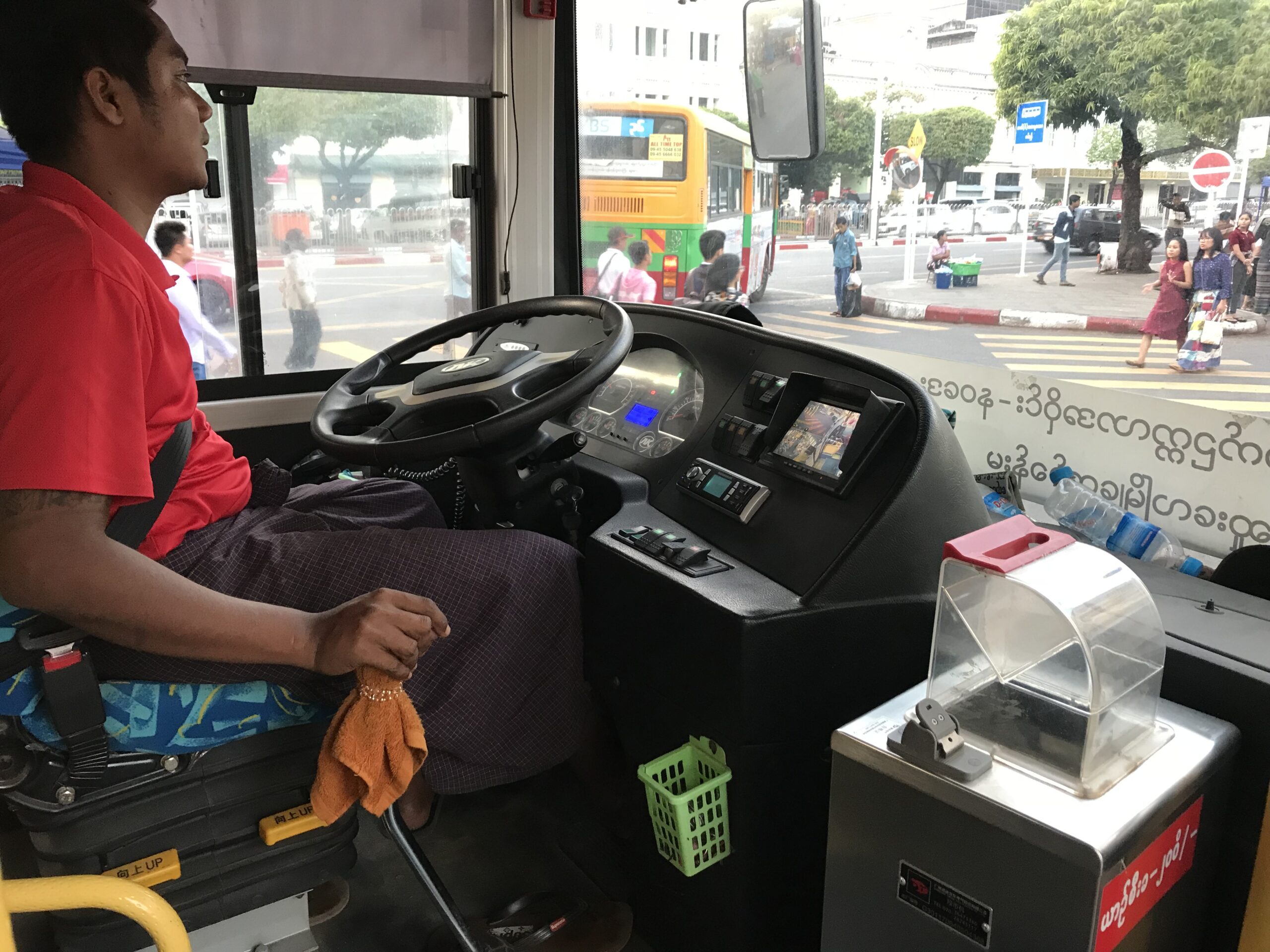
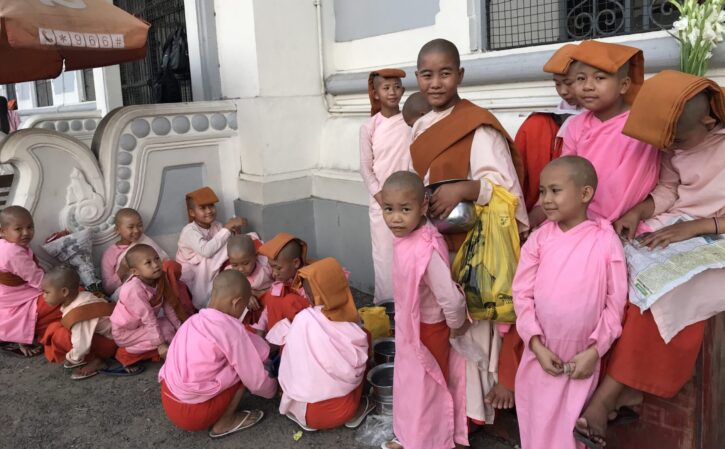
The Circular Train is among the cheapest mode of transportation (and fun). I’ll admit, it is very slow but in all fairness, slow means you get to see more of the place without stressing about how to take pictures. This train runs with a network length of about 46 km.
Rickshaw (found outside the city area) is a leisurely way of getting around the city. the driver is at the front of the “bicycle” with a cart or seat in the back for the passenger.
Bus Truck operates mostly in the rural areas and is actually a modified pick up truck with a roof and benches.
Craving coffee?
The area around Sule Pagoda (you are going to hear of lot of this) is filled with restaurants and coffee shops. Additionally, this is where you will find a bus to Thanlyin and Shwedagon Pagoda. While you are here, check out the old church and the post office. If you are lucky, you might even find a street vendor selling second hand books.
Here are few of my favourite coffee shops –
- Kafe in Town
- Rangoon
- Innwa Books and Coffee
For more coffeeshops to try, click here
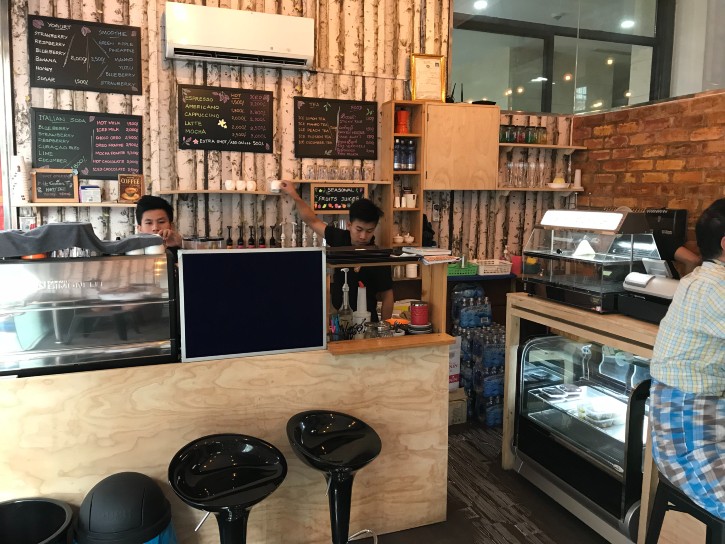
Useful Info
Airport Departure Tax: The international departure tax of US$10 is payable locally at Yangon airport. There is also a new domestic departure tax of 1000Kyat (approximately £1) payable locally in the local currency.
Currency: Local currency is Kyat and you can make all purchases with this. However, it is best to carry USD, but make sure you change it only at recommended exchanges or at your hotel.
Clothing: Remember, Myanmar is a conservative country and it is best to wear conservative clothes (also since you’ll be visiting lots of temples), preferably long dresses, cotton (to keep you cool)
Cuisine: The food here is heavily influenced by Indian, Chinese and Thai flavours with plenty of fresh vegetables and meat. Don’t miss the street food and dizzying varieties of crispy snacks.
Voltage: The electric voltage in Burma is supplied at 220 volt AC. Most English electric appliances work well, but a universal adaptor is needed.
Accommodation: Accommodation (hostels, hotels) are in plenty and cheap. Look for one closer to Chinatown or near Sule Pagoda (for easy access to major spots). Here is one you might find quite convenient.
For backpackers, Downtown area is highly recommended. This area is packed with hostels and of course is close to all the eateries!
“This article is now featured on https://www.gpsmycity.com. To download this article for offline reading or travel directions to the attractions highlighted in this article, go to Walking Tours and Articles in (city name) on GPSmyCity.”







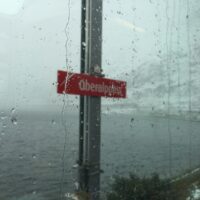
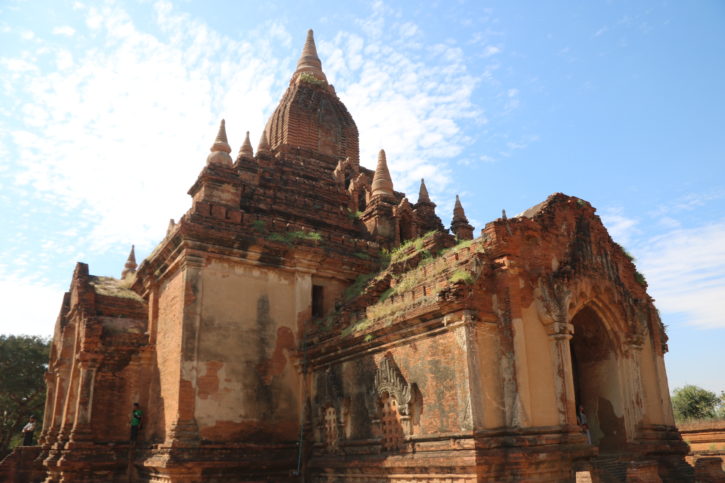
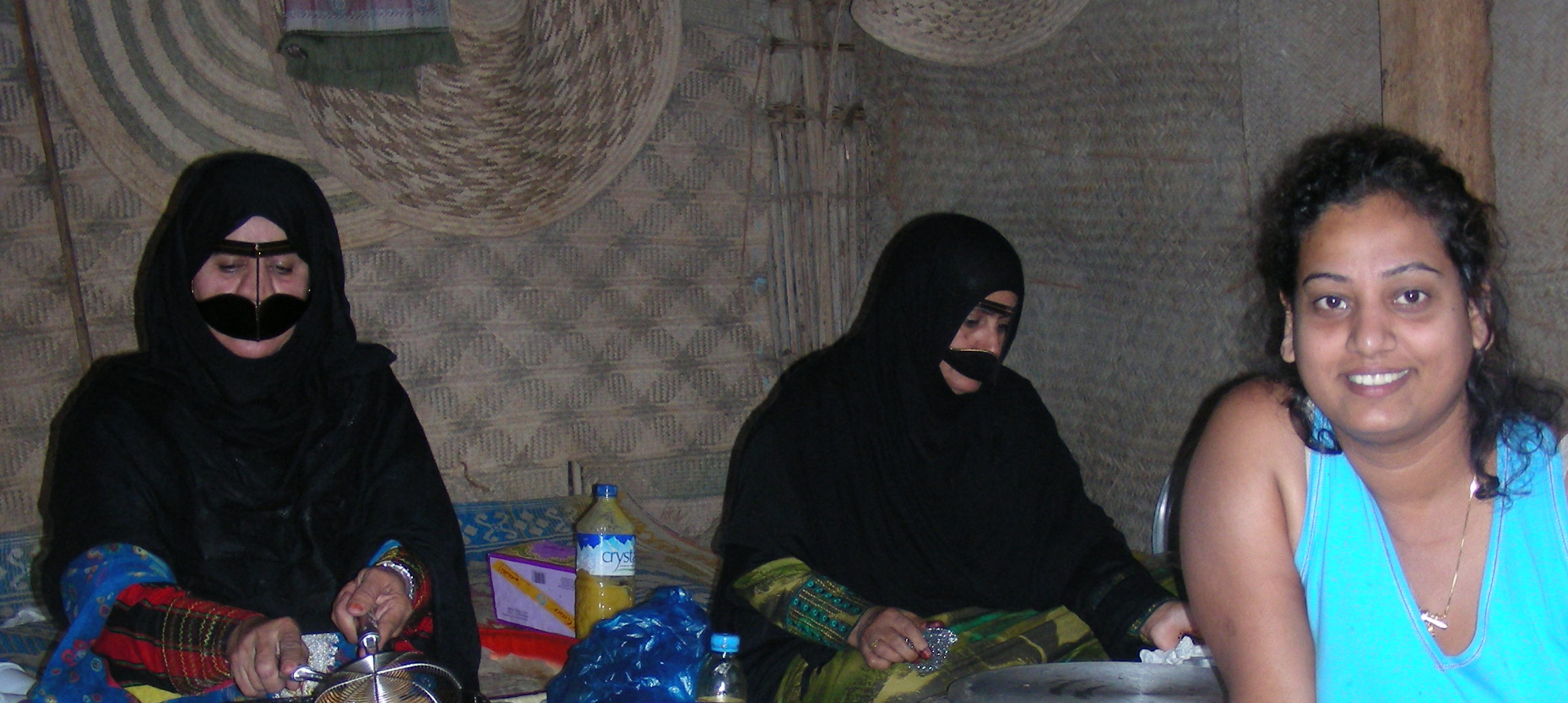
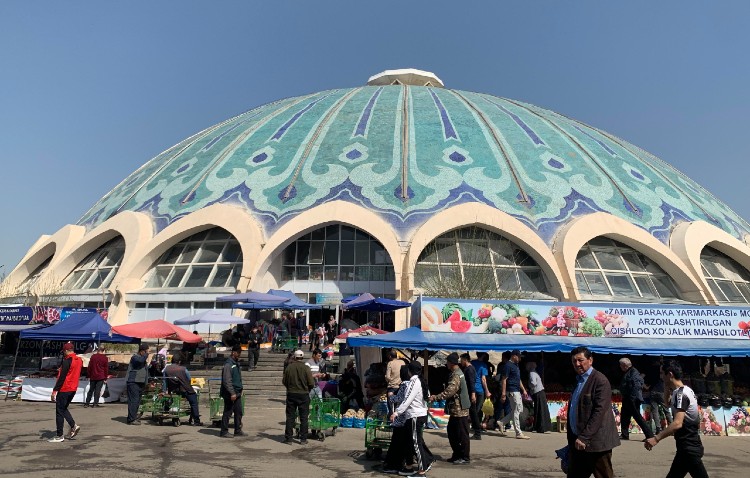
[…] Any way you choose to get there, Yangon offers a chance to experience unique culture. For more advice on this amazing city, visit this travel guide. […]